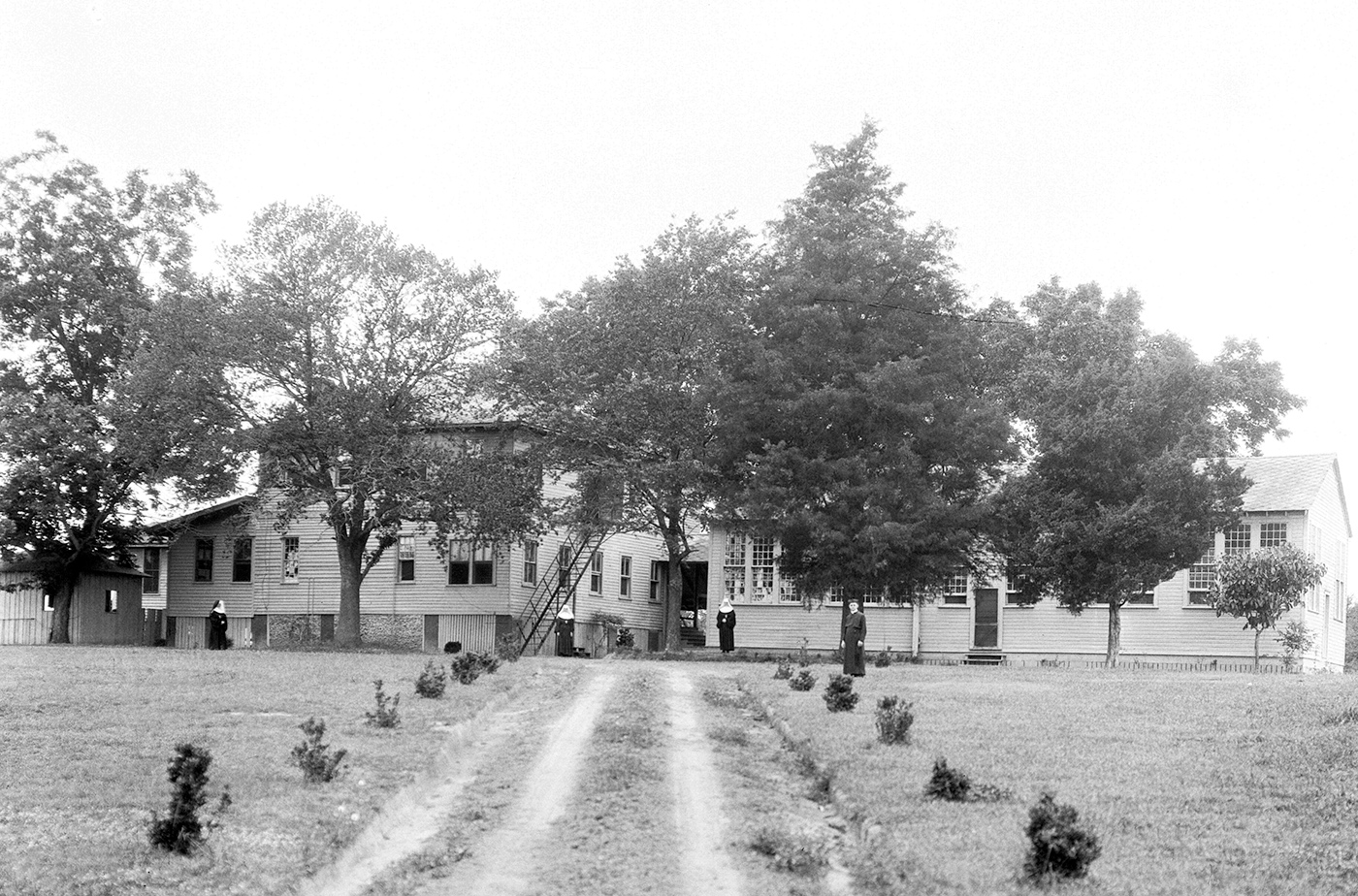
In October of 1923, Catholic Bishop Edward Patrick Allen dedicated the Zimmer Memorial Institute at 2567 St. Stephens Road in Toulminville.
Across the South, the options for Black orphans were limited at best during this time, and the institute was determined to help them better their lives. A Catholic priest by the name of Zimmer in Brooklyn had studied the idea of creating a home for this purpose and donated $5,000 (nearly $90,000 today) for its establishment. I could find no other information about that generous benefactor nor if he went on to establish other homes.
The orphanage operated in the former residence of Peter Reynolds, an Irish-born farmer who had been operating a truck farm on the property since the 1870s. Numerous small farms in Mobile County produced seasonal crops which could be shipped to northern markets by train.
Within a short time, the Zimmer property was described as covering more than 12 acres and held vegetable gardens as well as a baseball diamond, swing sets, a pond for swimming and a volleyball and basketball court. In news articles, reporters described other occupants of the property as including three shaggy pet dogs and ducks.
The orphanage was generally overseen by a half dozen nuns and financed jointly by the Community Chest and the Bureau of Catholic Charities. Ultimately, the building housed up to 30 boys and girls with ages ranging from 2 to 18. The arrangement allowed siblings to stay together and differed from other orphanages which were organized by gender.
Half Orphans and Broken Homes
The children were not necessarily fully orphaned but were often “half orphans or from broken homes.” They were described as being “seriously underprivileged” and many were brought in by relatives unable to provide for them. In one case, a mother, abandoned by her abusive husband, dropped off her three children so that she could attend nursing school in New Orleans. In several cases, following a mother’s death, the father who could not take care of small children while holding a job enrolled them.
Relatives could visit one Sunday a month and the children were able to stay with them on another. A two-week visit with family members could also be scheduled each summer.
At the time of the opening, children would stay until they completed the eighth grade, at which time they would be returned to relatives. Family members could always retrieve children if their circumstances had changed to make it feasible to provide for them.
There were exceptions, however. One girl with no family stayed on and helped with the smaller children until she turned 18 and left for a nursing program. The age later would be extended to coincide with high school graduation. At that point, if no family was available, the Sisters would line them up with jobs.
The institute was linked with Prichard’s St. James Parish which operated a nearby school attended by the children. At one time, four out of the six nuns at Zimmer were teaching there while two attended to the youngest residents. Admission was not limited by religion, and children were free to attend Sunday services at other churches.
A Post-War Renovation
In 1946, the property was completely renovated, and a reporter visited what he described as being “a large white building with spacious dormitories, dining hall and a big sewing room.” He explained, “Qualities of neatness, cleanliness and order are instilled in the children…so that when they go out in the world, they are equipped to make a decent living.”
The dining room had been refinished in “cheerful plastic tile” and contained “small tables for a family atmosphere.” The meals were prepared by the Sisters “with the assistance of the older children.” Pollman’s Bakery donated a cake to celebrate each child’s birthday, and generous Mobilians collected an assortment of gifts for Christmastime.
Boys slept in “double-decker” beds while the girls had single beds. “Everyone makes their own bed and tends to their own clothing – and even the boys are taught to wash and iron their clothes.” A small room with two beds was described as “a seldom-used Infirmary Room.” A priest conducted daily services in a chapel on the property.
In 1965, the segregation of Catholic orphanages in Mobile ceased and what was then known as the Zimmer Home closed, merging with St. Mary’s Home on Moffett Road.
According to city directories, the property at 2567 St. Stephens Road was consistently listed as “vacant” through the 1987 edition. In 1988, the address vanished, and nothing remains of the Zimmer Home or the old Reynolds home place. Two nearby streets retain the Reynolds’ name.





